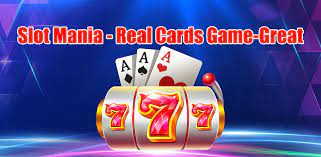Slot machines, commonly referred to as “AZURA 77,” are among the most popular and recognizable gambling games worldwide. Found in casinos, bars, and even online gaming platforms, they offer thrilling gameplay, instant rewards, and a wide variety of themes. But how did these machines evolve, how do they work, and what does the future hold for slot gaming? Let’s dive into the captivating world of slot machines.
A Brief History of Slot Machines
The history of slot machines dates back to the late 19th century. The first slot machine, the Liberty Bell, was invented in 1895 by Charles Fey, a San Francisco mechanic. This early model featured three reels with five symbols—hearts, diamonds, spades, horseshoes, and the Liberty Bell itself. If three Liberty Bells lined up, the player would win the highest payout of 50 cents.
By the early 20th century, slot machines became widely popular in bars and saloons. However, due to gambling restrictions, early machines often dispensed prizes such as gum or drinks instead of money. This led to the rise of the fruit machine, where symbols like cherries, lemons, and plums represented different flavors of chewing gum.
The introduction of electromechanical slot machines in the 1960s revolutionized the industry, making way for video slots in the 1970s. By the 1990s, the internet boom ushered in online slots, allowing players to enjoy their favorite games from anywhere in the world.
How Slot Machines Work: The Mechanics Behind the Magic
Slot machines may appear simple on the surface, but they operate on sophisticated technology designed to ensure fairness and randomness.
1. Random Number Generator (RNG)
Modern slots use a Random Number Generator (RNG), a complex algorithm that continuously generates random sequences of numbers, even when no one is playing. When a player presses the spin button, the RNG selects a random combination of symbols, ensuring that every spin is independent of previous results.
2. Reels, Paylines, and Symbols
Traditional slots had three reels, but modern games can have five or more. Each reel contains various symbols, and when they align according to predefined patterns, the player wins.
- Paylines: These are the winning patterns in a slot game. Classic slots had a single horizontal payline, while modern video slots can have hundreds or even thousands of ways to win.
- Symbols: Standard slot symbols include fruits, bars, sevens, and themed icons based on the game’s design.
- Wilds and Scatters: Wild symbols substitute for other symbols to create winning combinations, while scatter symbols often trigger free spins or bonus rounds.
3. RTP and Volatility
- Return to Player (RTP): This percentage indicates how much of the wagered money a slot machine pays back over time. A slot with a 96% RTP means players can expect to win back $96 for every $100 wagered (on average).
- Volatility: Slots can be low, medium, or high volatility. Low-volatility slots offer frequent but smaller wins, while high-volatility games pay out less often but in larger amounts.
The Rise of Online Slots and Mobile Gaming
With advancements in technology, online slot games have exploded in popularity. Developers like NetEnt, Microgaming, and Playtech create immersive games with 3D graphics, interactive bonus features, and even progressive jackpots that reach millions of dollars.
Benefits of Online Slots:
- Convenience: Play anytime, anywhere.
- Game Variety: Thousands of themes and gameplay styles.
- Bonuses and Promotions: Online casinos offer welcome bonuses, free spins, and loyalty rewards.
- Live Slot Games: Some platforms now offer real-time slot tournaments with live hosts.
Mobile gaming has also played a significant role in the growth of slots. With smartphones becoming more powerful, developers now create mobile-optimized slot games that run smoothly on iOS and Android devices.
Future Trends in Slot Gaming
As technology evolves, so do slot machines. Here are some key trends shaping the future of slot gaming:
1. Virtual Reality (VR) and Augmented Reality (AR) Slots
Imagine stepping into a virtual casino, pulling the lever of a slot machine in a fully immersive 3D world. VR and AR slots are set to revolutionize the gaming experience, making it more interactive and engaging.
2. Blockchain and Cryptocurrency Slots
Cryptocurrency-based slots allow players to wager Bitcoin, Ethereum, and other digital currencies, offering faster transactions, enhanced security, and greater anonymity.
3. AI-Powered Slots
Artificial Intelligence (AI) is being used to personalize gameplay, offering tailored slot recommendations based on a player’s preferences and habits.
4. Skill-Based Slot Machines
Traditional slots rely purely on luck, but skill-based slots incorporate elements where players can influence the outcome, making the experience more engaging for younger audiences.
Conclusion
Slot machines have come a long way from the mechanical Liberty Bell to the high-tech, interactive digital games of today. Whether in a physical casino or online, slots continue to captivate players with their thrilling gameplay, immersive themes, and life-changing jackpots. As technology advances, the future of slot gaming looks even more exciting, offering players new and innovative ways to enjoy their favorite pastime.
So, next time you spin the reels, remember—you’re participating in a game that has evolved for over a century, blending chance, entertainment, and cutting-edge technology into a single exhilarating experience. 🎰💰
